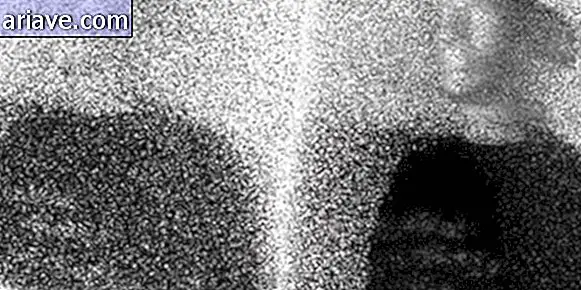Laws of physics and animals: a surprising combination
Obviously, animals have no idea what the laws of physics are. If a cat falls from a tree, he has no idea that it was the action of gravity.
However, even unknowingly, many animals master the physical laws of the universe in a way that even science understands little. But the evidence is in many situations of these animals. Check below what they are.
5 - The inner compass of dogs

Follow this situation and see if you have ever been through it: you are quietly walking your dog when suddenly he decides to stop, smell the place and circle and circle until he finds a position to evacuate. But why do they seem to need so much of a specific position?
This one you probably remember. Not long ago, Curious Mega showed you that terrestrial polarity influences how dogs poop. According to the researchers, these animals line up along the north-south axis when in tranquil geomagnetic conditions.
The study, conducted by scientists from the Czech University of Sciences, also revealed that dogs appear to avoid east-west orientation. It is as if they have an internal compass to guide you when it comes to your needs.

For the study, there was no other way, scientists had to follow those times when the puppies are relieved. For two years, they tracked 7, 500 needs eliminations (between pee and poop) from 70 dogs of 37 different breeds, and found that most defecated along the north-south axis of the Earth's magnetic field.
Scientists then came to the conclusion that dogs were following a kind of magnetic sensor because they are able to perceive small variations in terrestrial polarity. However, despite the discovery, experts could not explain exactly why these animals do this. One hypothesis is that they take advantage of this moment of relief to “calibrate” their sense of direction.
4 - The incredible balance of cockroaches and geckos

A team of scientists at the University of Vermont has done research to check the agility and balance ability of cockroaches and geckos. The study, published in the scientific journal PLOS One, explained how these animals can be the true masters of Parkour.

Escaping from predators often requires animals to quickly deal with complex environments. Smaller animals reach relatively fast speeds with high-frequency strides, wing beats or body undulations, but absolute speeds are slow compared to larger animals.
The researchers clarified that small animals benefit from the advantages of greater maneuverability partly due to scale. You can see this agility in gifs, where both animals quickly climb a tilted object and quietly circle the edge upside down.

The study explained that these species have claws that act as hooks and use a pendulum motion that can exceed one meter per second around an inverted position under the edge.
This was even clearer when scientists tested specimens that had their claws removed. And it happened:

3 - Elephant ninja communication
By manipulating the vocal cords the same way we do, elephants are able to communicate through an infrasonic murmur in a much lower pitch than our human ears can detect. Other elephants can hear it perfectly, even those about 30 kilometers away.

In a way, elephants whisper complete conversations with their distant friends. And it is not by the giant ears that they detect the vibrations of other colleagues, but by their paws, which can be considered some of the most sensitive in the animal kingdom. These murmurs create small tremors in the ground that are intercepted by other specimens of the same species.
From there, the sound travels from your leg through the body, which sends the signal to the brain. Elephants can even decipher the direction the sound came from. This distinctive overhearing allows them to do all sorts of teamwork, from staying in touch with loved ones to alerting friends about predator proximity.
2 - Spiders and static electricity

Have you ever seen a spider's foot very close? Well, that's probably something nobody wants to see, isn't it? However, you can safely observe the image above, which shows the arachnid leg, which has several hairs that act as hooks so that it can walk smoothly through the walls. Did you remember Spiderman?
Well, in the same movie they show those same little hairs growing in Peter Parker's hands during his mutation, and they stick to everything quite efficiently, like a high-fastening velcro.
And it is these tiny hairy limbs that take advantage of a natural phenomenon called the van der Waals force, which is the sum of all attractive or repulsive forces, where electrons of static variation between spider hairs circulate until a negative and a positive finally meet. And as opposites attract, in this case there is the creation of a bond that results in the effect necessary for the spider to stick to any surface.
1 - The solar powered wasp

Hardly any terrestrial species lives without the star-king, especially humans. However, there is an insect that is actually powered by solar energy, which is the wasp orientalis - which is also known as the eastern mangava.
This species is partially powered by solar panels on its body, which explains its habits most of the day to ensure the light supply. To check this ability, some researchers captured a few specimens of this wasp and illuminated them with ultraviolet light, noting that the wasps took action.
When scientists went to check the samples under a microscope, they discovered special structures about the exoskeleton that are extremely efficient at collecting sunlight to convert it into electricity. Researchers believe that some of this electricity is transferred to the wing muscles and a type of cooling system.
With this information, the researchers found that while these species proliferate more in warm, sunny places, they have a low body temperature, suggesting that they convert excess sunlight into electricity for cooling. Even their cocoons have photoelectric properties, which harness sunlight to help develop larvae.











